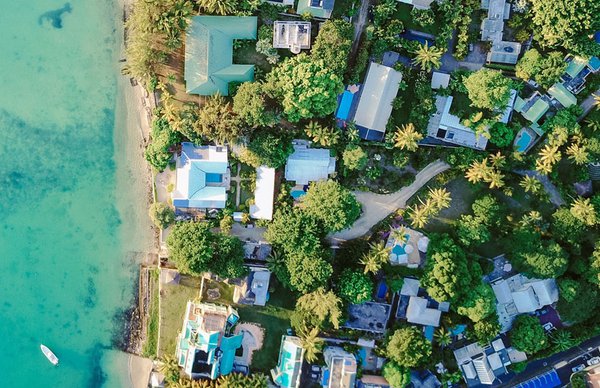Making smart real estate investments is all about accurately forecasting future events, even when present circumstances point to risk.
Despite a virtual shutdown during first six weeks of the pandemic in 2020, the U.S. housing market bounded back into action with an unleashed glut of demand. It has been in high gear ever since, with home sale prices soaring and fierce competition for a limited supply of existing-homes.
One of the most interesting developments to emerge over the past year has been the surge in sales of existing homes intended for use as vacation properties and destination rentals.
Research from the National Association of Realtors found that vacation home sales rose 16.4% from 2019 to 2020, while the share of vacation home sales to total existing-home sales increased to 5.5%, up from 5% in 2019.
This year, the pace of vacation home sales has been even more dramatic. From January to April 2021, vacation home sales shot up 57.2% year over year and the share of vacation home sales to total existing-home sales rose to 6.7%.
For perspective, existing-home sales grew overall by 5.6% from 2019 to 2020, and by 20% during the early months of 2021 compared to 2020.
The most popular place for vacation home sales was Lee County, located on the Gulf Coast in Southwest Florida. This category of property accounts for 23% of the county’s housing stock, and with a median sale price of $247,000, they represent an affordable option. Home sales in Lee County increased by 10% in 2020 and the median sale price rose by 12.3%, according to the NAR.
Collier County, also in Southwest Florida, also saw a surge in home sales over the last year. The home to Everglades National Park, the Naples Zoo and the Bird Garden saw home sales increase by 4.6% and the median sale price climbed 10.2% to $314,000.
The NAR research found that vacation home counties in the U.S. — those whose housing stock has a high proportion of such homes — outperformed non-vacation home counties both in terms of sales pace and price appreciation.
In vacation home counties, exiting home sale rose by about 24.2% on average, compared to an 11.2% in non-vacation home counties during the pandemic. The analysis included 145 vacation home counties and 1,060 non-vacation home counties.
Other popular locations for vacation homes during the pandemic include counties in Michigan, the Carolinas, Massachusetts, New York and Maryland. The top 1% of vacation home counties included in the analysis were in 16 states.
The study also found that an increasing number of vacation home buyers were making all-cash transactions at closing. That number rose to 53% of all vacation home purchases from January through the end of April this year. In past years, that number has hovered around 50%. And compared to all existing-home sales, just 22% of purchases were all-cash transactions during the same period.
How do we make sense of this preference for vacation homes during a time of great uncertainty?
“Vacation homes are a hot commodity at the moment,” said Lawrence Yun, NAR’s chief economist. “With many businesses and employers still extending an option to work remotely to workers, vacation housing and second homes will remain a popular choice among buyers.”
There also seems to be a growing recognition that these properties will serve a dual purpose as an asset. They can be used by the owner as they see fit for their lifestyle, or they can be rented out to help cover the mortgage and expenses.
For those looking to rent their properties, the bet being made is that the American appetite for vacationing is going to be strong in the years to come. After being stuck at home for a long period, a resurgence of getaways and sight-seeing presents an opportunity in the right markets to turn a property into a revenue generator in addition to a long-term investment, assuming the management and marketing of the property can be handled with grace.
Whether this trend continues as the worst of the pandemic recedes and more new homes hit markets across the country will be an interesting angle to follow. Watching how these counties perform and how well these investments pan out for buyers will go a long way toward establishing the wisdom of pouring cash into vacation properties.
Americans have been racing back to airports faster than the airlines expected as the floodgates to society are reopened. In the near-term, vacation homes give buyers every reason for confidence in their flexibility.


